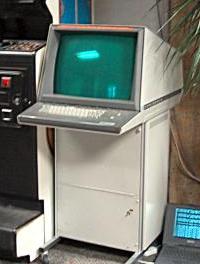
Photo from wikipedia
Effect of electrolytic anions on the charge storage mechanism and hence on the specific capacitance of Fe3O4 (magnetite) flexible thin film electrodes (FTFEs) has been studied. The synthesis of Fe3O4… Click to show full abstract
Effect of electrolytic anions on the charge storage mechanism and hence on the specific capacitance of Fe3O4 (magnetite) flexible thin film electrodes (FTFEs) has been studied. The synthesis of Fe3O4 on flexible stainless steel substrates has been carried out using successive ionic layer adsorption and reaction technique. 0.2 M FeCl3 and 0.1 M NaOH aqueous solutions were used as cationic and anionic sources respectively. X-ray diffraction pattern of the FTFE shows peaks at angles 2θ = 43.64° and 44.54° indicating the formation of orthorhombic Fe3O4 crystals of average size 10.25 nm. The scanning electron microscopic (SEM) image of FTFE shows irregularly stacked thin layers of interconnected nanograins. Surface wettability investigation concluded the hydrophilic nature of the prepared electrodes, as the measured contact angle was 10.5°. Thickness of the thin film observed by SEM cross section is ~267 nm. Cyclic voltammetric (CV) analyses substantiated that depending on the existence of electrolytic anion, the electrode stores charge either by physisorption-desorption or by redox reactions. FTFE shows maximum current hence the specific capacitance in KOH is more than SC in KCl. The observed maximum specific capacitance (SC) in 1 M aqueous solution of KCl was 206.53 F g−1 and that in 1 M aqueous solution of KOH was 542.21 F g−1 at 100 mV s−1. The galvanostatic charge–discharge analyses shows that the electrochemical performance of FTFE in KOH is better than that in KCl. The observed values of SCs at current density 1 mA cm−2 in KCl and KOH were 281.22 and 487.84 F g−1 respectively, which are nearly same as those given by the CV.
Journal Title: Journal of Materials Science: Materials in Electronics
Year Published: 2017
Link to full text (if available)
Share on Social Media: Sign Up to like & get
recommendations!